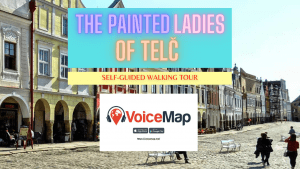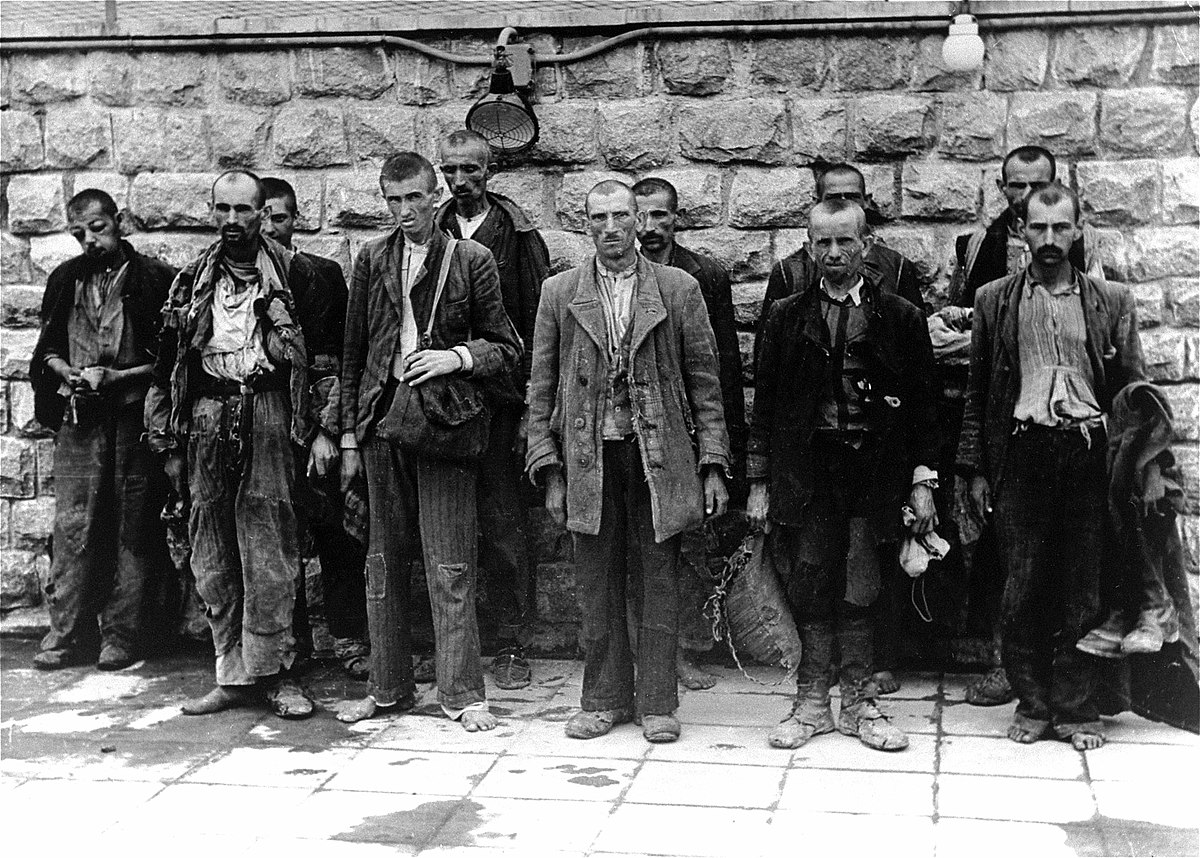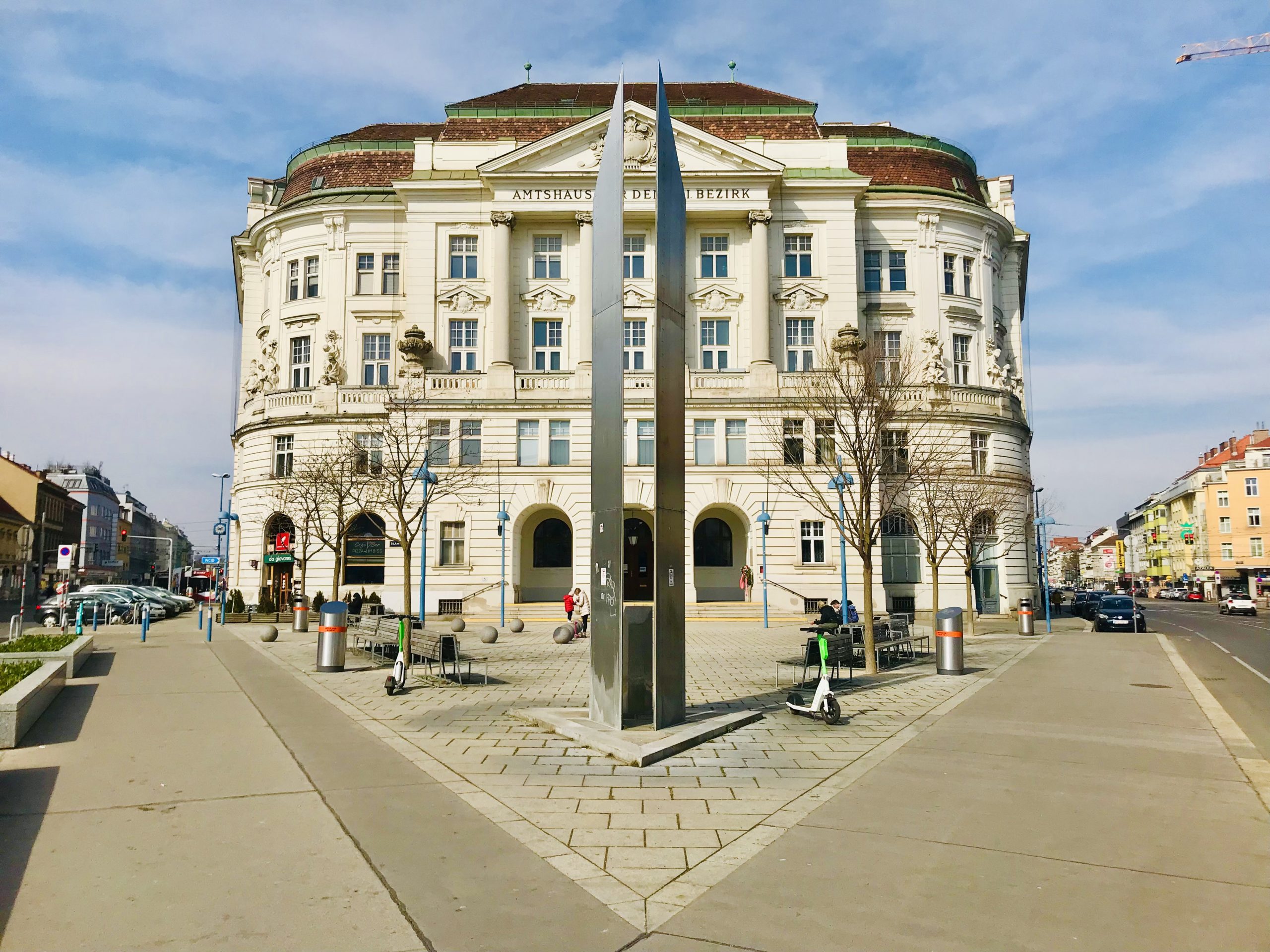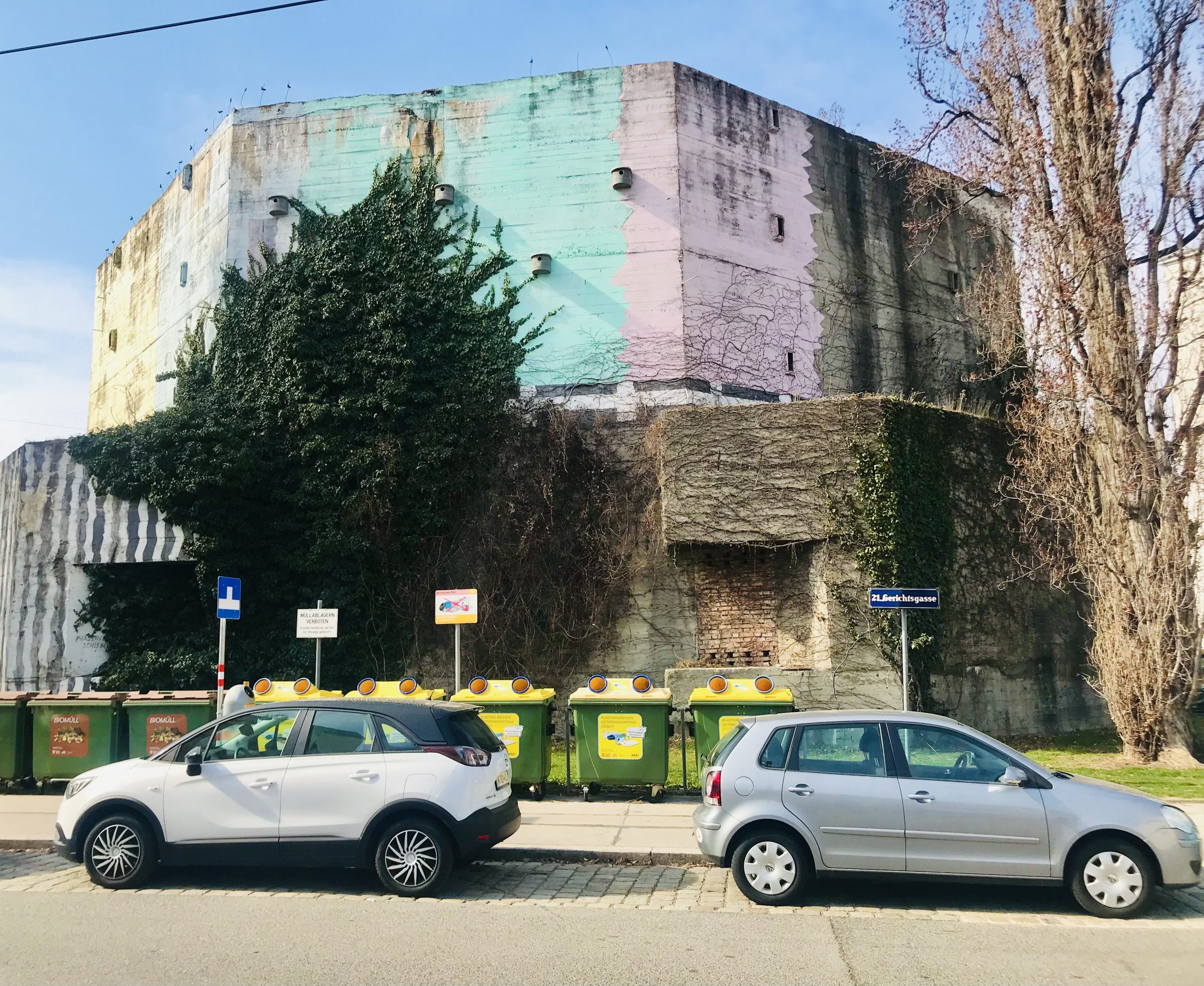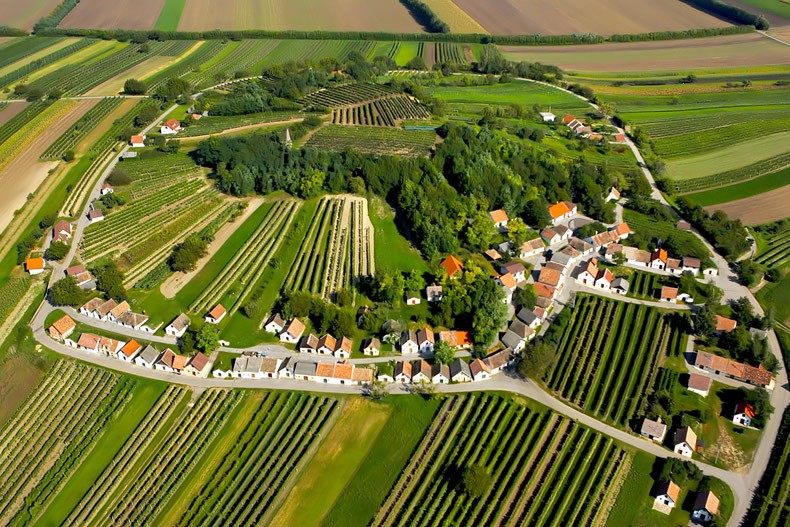
GALGENBERG KELLERGASSE: 180 ANCIENT WINE CELLARS BUILT INTO A SCENIC HILLSIDE ROAD IN LOWER AUSTRIA
Table of Contents
Welcome to Galgenberg, Austria’s best example of a kellergasse or wine cellar road! Completely off the beaten path and hardly advertised, this incredibly hard to find gem in the wine region of Lower Austria, contains over 180 wine cellars built into the Galgenberg hillside. The Galgenberg Kellergasse has the largest concentrated collection of wine cellars anywhere in Austria. If you are looking for a gorgeous day out in the countryside, then exploring the Galgenberg Kellergasse is for you. Read on!
WHAT EXACTLY IS A KELLERGASSE?
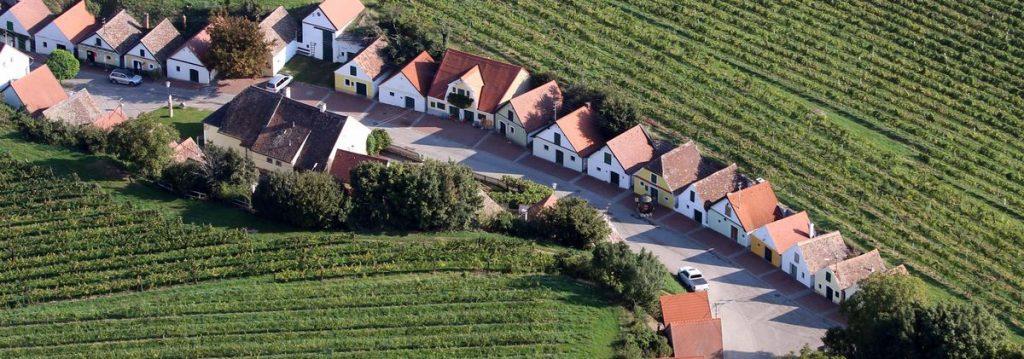 weinviertal.at
weinviertal.at
So what exactly is a Kellergasse? Great question!
Lower Austria has a long history of wine making that dates back to Roman times. Typical for the region, growers that worked the land dug underground tunnels or “cellars” to store their finished product. Underground tunnels have a consistently cool temperature that is great for storing wine. These tunnels were often dug by hand, if you can believe it. Many have roots growing through the ceiling for added character.
Growers built press houses above the tunnels. Historically, press houses are above ground and are used for “pressing the grapes,” making wine, and/or storing wine, and other products (such as grape and apple juices).
When you have a large number of press houses with wine cellars concentrated along a road, it is called a kellergasse (or wine cellar lane).
PRESS HOUSES AND WINE CELLARS
Press Houses and Wine Cellars are the most prominent places for wine making. The Galgenberg Kellergasse has the highest concentration of wine cellars in Austria.
PRESS HOUSES
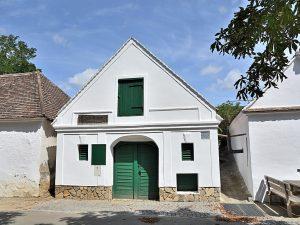 wikimedia commons
wikimedia commons
Press houses are where the harvested grapes are “pressed.” Historically, the walls of the press houses were made from unfired clay or bricks, before being given a lime wash. Traditionally, the cellar exteriors were painted white and the wooden doors were painted turquoise (with copper sulfate) to give the historic cellar lanes their characteristic old-world charm.
A classic press house has a pitched roof and a double main access door set slightly to one side. Open the doors and the cellar tunnels will be off to your left or right. Many press houses have imaginatively decorated escutcheons (the metal decor) around the door handles and locks. A typical press house will have one or two windows, as well as a trap door close to ground level, to funnel grapes inside the house. Windows are used for ventilation and to allow natural light into the press house.
The wine presses (barrel, screw, and beam presses) are positioned on the same side of the house as the trap door and windows. Down in the tunnels, wine barrels are lined up on one side of the tunnel. On the exterior, press houses have Reia or Schlufs, essentially large protruding runoffs to direct rainwater away from the building. Almost all press houses are built into hillsides.
WINE CELLARS AND WINE CELLAR ROADS
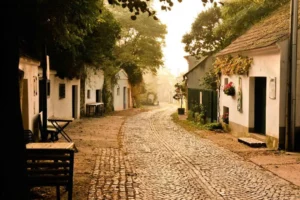 weinviertaldac.at
weinviertaldac.at
During the Middle Ages in Europe, press houses and wine cellars in the villages belonged to the feudal lord. They oversaw the wine making in their region. To save time and energy, these cellar roads were located close to the vineyards. Growers had to transport all of those grapes from the vineyard to their press houses. This was before the automobile!
The best case scenario for a grower was to have light soil or natural hollow near the vineyard. Why? This saved time and energy digging out a cellar. With the abolishment of serfdom and manorialism, freed farmers took to their new fields and started producing wine — the result, the exponential growth of wine making, wine cellars and… wine cellar roads!
While the cellar roads were once used only for making and storing wine, today they are a unique cultural highlight. Also, they are still in use. In fact, the majority of the 1,100 cellar roads in Lower Austria are located in Lower Austria.
Galgenberg remains an active wine growing region. The press houses along the Galgenberg Kellergasse are occupied by local families who produce their own wine and juice for small scale purchase and consumption
OUR EXPERIENCE VISITING THE GALGENBERG KELLERGASSE
Driving throughout Lower Austria, we had observed several of these wine cellars. That said, their specific purpose remained a mystery to us. After doing some research, we surfaced a photo of the Galgenberg Kellergasse; however, there was no additional information.
After some sleuthing, we learned that the Galgenberg Kellergasse had the largest concentration of wine cellars in Austria. For wine enthusiasts or those seeking an out of the way cultural experience, this is a hidden gem. Completely unique, it is literally an entire hillside of wine cellars surrounded by scenic vineyards.
We brought visiting friends to Galgenberg on a day trip to the countryside to explore the Kellergasse and surrounding area. After parking our vehicle on a side street, we roamed around the small village of Galgenberg until we found a family selling their wine, grape juice, and sturm from a small stand.
WHAT IS STURM?
Sturm is made from partially fermented grape juice and is made after the first pressing of the season. Sturm is cloudy (red or white) with yeast and tingles slightly.
Check this out. Sturm is a protected beverage name throughout the EU. Sturm can only be sold as Sturm if… it was produced exclusively from grapes that were harvested and processed in Austria. More specifically, the grapes had to have been grown in Weinland, Steirerland, or Burgenland. One more thing, Sturm can only be sold between August 1st – December 31st of the respective harvest year. Wow!
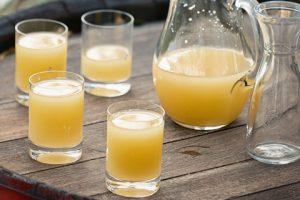 konsument.at
konsument.at
After inquiring further about the wine cellar culture, the man brought us to his very friendly niece who spoke English. Understanding our interests, she and her uncle offered to give us a tour of their three wine cellars. She explained that each week on the Galgenberg Kellergasse, different local families take turns promoting and selling their wines.
Deceiving in every way, the underground wine cellars were enormous and had multiple tunnels, entrances, and exits. Entering the press houses reminded me of Doctor Who and his traveling police call box, the TARDIS — deceivingly small on the outside and ginormous on the inside.
Winemaking is an ancient tradition (dating as far back as the Egyptians). Being able to find and explore this unique piece of cultural heritage was incredibly gratifying. Naturally, tasting and drinking wine throughout our day was a real treat as well. If you are looking for a relaxing day then the Galgenberg Kellergasse is for you. Enjoy!
PRO TIPS FOR VISITING THE GALGENBERG KELLERGASSE
We spent weeks compiling this incredible list of PRO TIPS to help you make the most of your experience visiting the Galgenberg Kellergasse and surrounding region:
PRO TIP 1 — VERY IMPORTANT. TOP SECRET: For guided tours of the Galgenberg Kellergasse and other Wine Cellar Roads, check out this website: Certified Wine Cellar Road Tour Guides. Select your kellergasse and use this list to find a local guide. There is literally no information online.
PRO TIP 2. The Galgenberg Kellergasse is near the Austrian-Czech border in a remote region of rolling hills and agriculture. The best way to reach it is by vehicle.
PRO TIP 3. Although there are other wine cellar roads throughout Austria, Bohemia (lower Czech Republic), and Hungary, the Galgenberg Kellergasse has the largest concentration of wine cellars — the motherlode! There are no signs telling you this.
PRO TIP 4. When visiting, make a day of it, bring bicycles, and a packed lunch. Galgenberg is also very dog-friendly.
PRO TIP 5. Walking around this unique village, and the surrounding vineyards, and enjoying the local wines is really the experience.
PRO TIP 6. In September, the first wine pressing is called sturm. It is a cloudy and sweet concoction that tastes like grape juice. Warning — it has alcohol. Try it!
PRO TIP 7. In addition to the local wines, make sure you try the fresh Traubesaft or grape juice, which is amazingly delicious.
PRO TIP 8. For families, there is a 100 plus foot long bright red slide coming down the hillside from the Hubertus Chapel (located on the Galgenberg Hill). Chat with the locals as they will invite you in to see their cellars!
PRO TIP 9. For bicycle enthusiasts, Galgenberg is located near the Iron Curtain Bicycle Trail which traverses the Austrian-Czech border at an old Cold War border crossing.
PRO TIP 10. Fun for kids, a few miles north along scenic Route L36 is the Austrian-Czech border (and the road to Mikulov). Children can have fun jumping over the painted border on the road that separates neutral Austria from the old Eastern Bloc. At the now deserted border, there is a nice park and playground as well. CLICK HERE for directions to the border crossing.
PRO TIP 11. Other nearby attractions include Falkenstein Castle and Mikulov Castle. The Retz Wine Cellars are unique and different than the Galgenberg Kellergasse. The Retz Wine Cellars are a 13 mile network of wine cellars and are several stories deep. This is the longest network of interconnected wine cellars in Central Europe.
OTHER AMAZING WINE CELLAR ROADS IN THE REGION
Lower Austria is well known for its Wine Cellar Roads. They come in all shapes and sizes. After visiting numerous cellar roads, these are the most amazing ones. They were the most picturesque, colorful, and afforded a wonderful experience. Click on the links for more information.
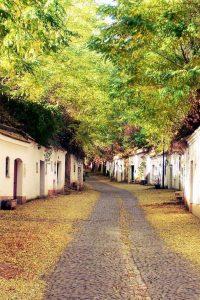 wikimedia commons
wikimedia commons
MAULAVERN (ZELLERNDORF). The Kellergasse in Zellerndorf also known as “Maulavern” includes nearly 90 wine cellar houses and at over 150 years old is among the oldest and most beautiful in the Weinviertel region.
PILLERSDORF. The Öhlberg Kellergasse in Pillersdorf has largely preserved its original character. There are 40 press houses next to one another that are protected as a historic monument in the market village Zipf in Mailberg in Weinviertel.
GSTETTEN (POYSDORF). The Gstetten, or Kellergstetten, is among the most famous Kellergassen (cellar lanes) in the Weinviertel. It is a hamlet of Poysdorf where press houses and cellar houses have been built next to one another.
HADRES. The longest Kellergasse in the world is found in Hadres, a small market village in Hollabrunn in Lower Austria. It is 1600 meters long and has around 400 cellar house and press houses.
UNTERSTINKENBRUNN. The cellar village “Loamgrui” in Unterstinkenbrunn has a unique construction. Two narrow passes that are protected historical monuments connect the cellar village with the town. One interesting thing about Unterstinkenbrunner is that every house in the village has a miniature counterpart, (i.e., if there is a large house in the village, there is a smaller version on the wine cellar road).
NEAR THIS PLACE
TRAVEL GUIDE | RETZ UNDERGROUND WINE CELLARS. Retz has a beautiful medieval square and the largest and most extensive network of underground wine cellars in Central Europe.
TRAVEL GUIDE | EASY SCENIC HIKES NEAR VIENNA. Explore one of the many dog friendly scenic hikes near Vienna. There are castles, wild life, ancient roads, and fresh air.
VIENNA WINE TOUR AND HIKING DAY. The Vienna wine trails, an annual scavenger hunt for oenophiles in the scenic city outskirts. Enjoy a glass of wine, as you walk from vineyard to vineyard.
HAGENBRUNN: VINTNERS, VINEYARDS, AND HEURIGE. Hagenbrunn, an entire village of vintners, vineyards, and heurige east of the Danube. Enjoy a great day out at this off the beaten path location.
MEMORIAL OF THE IRON CURTAIN. The last remaining section of the Iron Curtain is preserved in the small village of Čížov, Czech Republic along the border where East once met West.
VOICEMAP | TELC SELF GUIDED WALKING TOUR. Experience the pretty town of Telč with its spectacular medieval square, baroque-renaissance architecture, and vibrant history. The Painted Ladies of Telč are among the many wondrous features of this UNESCO designated fairytale town that really has it all.
BEST PLACES TO STAY
SO/ VIENNA. Designed by the famous architect Jean Nouvel, this stylish hotel is near all of the sites. Panoramic views over Vienna, a gourmet restaurant, a gym, and FREE spa facilities. Modern, spacious rooms with air conditioning, FREE mini-bar, and FREE Wifi. ADDRESS: Praterstraße 1, 02. Leopoldstadt, 1020 Vienna, Austria.
RUBY LISSI HOTEL VIENNA. Boutique hotel located in an 18th-century building in Vienna’s first district. Luxuriously furnished rooms with air conditioning, wooden floors, use of tablet device and FREE Wifi. Each room has a Marshall amplifier and guitars can be rented. Organic breakfast and 24/7 access to Italian antipasti and snacks, beverages and selected wines. ADDRESS: Fleischmarkt 19 / Laurenzerberg 2, 01. Innere Stadt, 1010 Vienna, Austria.
GRAND FERDINAND VIENNA. Opened in autumn 2015, located on the Ringstraße boulevard in the center of Vienna. Modern spacious rooms with air conditioning. Rooftop pool, 3 restaurants, fitness center, and FREE Wifi. ADDRESS: Schubertring 10-12, 01. Innere Stadt, 1010 Vienna, Austria.
LE MERIDIEN VIENNA. Located on the Ringstraße in the heart of Vienna. Modern, spacious rooms with amenities. Indoor pool, spa facilities, fitness center, FREE mini-bar, and FREE Wifi. ADDRESS: Robert-Stolz-Platz 1, 01. Innere Stadt, 1010 Vienna, Austria.
DO&CO HOTEL VIENNA. Steps away from St. Stephen’s Cathedral in the heart of Vienna, this elegant hotel features spacious and stylish rooms with modern furnishings, wooden floors, air conditioning, and FREE Wifi. FREE use of neighborhood fitness center. ADDRESS: Stephansplatz 12, 01. Innere Stadt, 1010 Vienna, Austria.
RESOURCES
![]()



